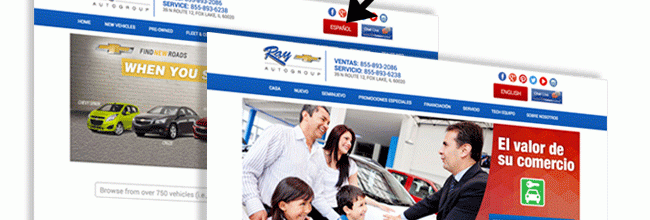Do you know that every dollar spent on advertising does not generate the same results? With so much uncertainty in the world today, dealerships need to make the best choices possible when managing their marketing budget. Making changes to your marketing plan can be a daunting thought but considering the amount of ambiguity over the next couple months, it’s important not to discard marketing that works while retaining the redundant marketing overlap. Data Driven Decisions Dealers have always had to build their dealership brand, advertise inventory and sales promotions and build customer loyalty. In today’s turbulent environment, dealers must play
Read More
Archives for Digital Marketing
Revolutionize Your Dealership’s Advertising
Tony FrenchTony French is a Digital Marketing Expert, Sales Guru, Entrepreneur, Writer, Artist, Husband, Father & Dog Lover
Read More
The Secret Tools Advertisers Use to Follow You
Tony FrenchTony French is a Digital Marketing Expert, Sales Guru, Entrepreneur, Writer, Artist, Husband, Father & Dog Lover
Read More
Is Your Dealership Declining in Market Share and Profitability?
Tony FrenchTony French is a Digital Marketing Expert, Sales Guru, Entrepreneur, Writer, Artist, Husband, Father & Dog Lover
Read More
AIM’s President Highlights the Importance of People-Based Marketing at Digital Dealer Chicago
TonyTony French is a Digital Marketing Expert, Sales Guru, Entrepreneur, Writer, Artist, Husband, Father & Dog Lover
Read More
AIM Wins a Davey Award for New Dealership Website
Automotive Internet Media (AIM) won a Silver 2016 Davey Award for their English-Spanish website for automotive dealerships within the website category. The Davey Awards honors the best in Web, Design, Video, Advertising, Mobile & Social from small agencies worldwide. The Davey Awards are awarded to the best in various industries across many different categories. AIM along with General Motors and Walt Disney Studio Motion Pictures were a few of the Davey Award winners in 2016. The Davey Awards is overseen and sanctioned by the Academy of Interactive and Visual Arts. AIM’s multilingual website platform was judged on merit and a
Read More
Is Your Website the Best it Could Be?
10 REASONS WHY OUR WEBSITES ARE THE BEST IN THE AUTOMOTIVE INDUSTRY: 1. Simplicity, Navigability, Usability We don’t make users think. We make it obvious and self-explanatory for shoppers on how to use the site. 2. White Space and Design Complex sites are harder to read, scan and use. Our designs make it easy for a consumer to shop for your inventory. Our goal is to showcase your inventory, products and services. 3. Increased Conversion By minimizing friction and implementing clear, easy to use lead forms our sites will help you generate more leads. 4. Searchability Our simple search tool
Read More







